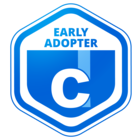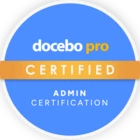Hi everyone,
I’ve decided to change the default language from English to English_UK to reduce the number of helpdesk tickets I receive complaining all the UI elements and pages have incorrect spelling in Australia.
The great thing is Docebo Learn does allow for localisation and I jumped in. Here are some of my learnings from doing this for those of you perhaps thinking about doing something like this.
- I used the “user mass edit” tool to change the default language for everyone. I noted that it took way too long as we have 5500+ users and I wasn’t sure it was working. I then did it in batches by user groups of 100s at a time which worked better, but still took a long time.
Time to do this aside, the lesson here for me was to work out what I needed to do in localising the language before I jumped in and changed this! So back a few steps now.
- I wasn’t really sure what parts of the LMS I needed to ensure I had both the current default language text updated and any new default language I wanted to use.
For example, we have added some additional user fields which all needed text in the new default language, then upon exploring more I found we had several additional fields all needing work. This led me to more areas in the LMS I needed to prepare before making the change. I felt to myself I needed to put my SuperAdmin cape back in the cupboard as I failed this task without thinking about it first LOL.
- Some areas have the option to set all languages to the same as default language, and this was an awesome thing for me allow me to make sure I had languages synced, but to my new default which was the UK english. Note, you will need to set this in some areas to make it do this, and you may need to copy any text you edited already perhaps added by an admin with the default language changed, if that makes sense.
Here are some of the areas in the LMS I missed initially but need to be checked before diving into changing the default language (you may have more apps and features so check them too):
- badges
- user additional fields
- terms and conditions (if changing, may require all users to re-accept it)
- privacy policy (if changing, may require all users to re-accept it)
- any customisations to the header/footer (white label)
- cookie policy
- notifications (this is a big one)
Anyway, hope that helps people with this area. I learnt the hard way plan out what you are doing first as something that sounded simple required a little more planning and work, but it is possible to do in Docebo Learn which is great.







 Admin Menu > Configure Branding and Look
Admin Menu > Configure Branding and Look